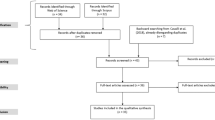Abstract
Despite earlier scepticism there is now evidence for simple forms of intentional and functionally referential communication in many animal species. Here we investigate whether dogs engage in functional referential communication with their owners. “Showing” is defined as a communicative action consisting of both a directional component related to an external target and an attention-getting component that directs the attention of the perceiver to the informer or sender. In our experimental situation dogs witness the hiding of a piece of food (or a favourite toy) which they cannot get access to. We asked whether dogs would engage in “showing” in the presence of their owner. To control for the motivational effects of both the owner and the food on the dogs’ behaviour, control observations were also staged where only the food (or the toy) or the owner was present. Dogs’ gazing frequency at both the food (toy) and the owner was greater when only one of these was present. In other words, dogs looked more frequently at their owner when the food (toy) was present, and they looked more at the location of the food (toy) when the owner was present. When both the food (toy) and the owner were present a new behaviour, “gaze alternation”, emerged which was defined as changing the direction of the gaze from the location of the food (toy) to looking at the owner (or vice versa) within 2 s. Vocalisations that occurred in this phase were always associated with gazing at the owner or the location of the food. This behaviour, which was specific to this situation, has also been described in chimpanzees, a gorilla and humans, and has often been interpreted as a form of functionally referential communication. Based on our observations we argue that dogs might be able to engage in functionally referential communication with their owner, and their behaviour could be described as a form of “showing”. The contribution of domestication and individual learning to the well-developed communicative skills in dogs is discussed and will be the subject of further studies.
Similar content being viewed by others
Author information
Authors and Affiliations
Additional information
Received: 3 April 2000 / Accepted after revision: 2 September 2000
Rights and permissions
About this article
Cite this article
Miklósi, A., Polgárdi, R., Topál, J. et al. Intentional behaviour in dog-human communication: an experimental analysis of “showing” behaviour in the dog. Anim Cogn 3, 159–166 (2000). https://doi.org/10.1007/s100710000072
Issue Date:
DOI: https://doi.org/10.1007/s100710000072




